- About
- Admissions
- Study at AUS
- Prospective Students
- Bachelor's Degrees
- Master's Degrees
- Doctoral Degrees
- Admission Publications
- International Students
- Contact Admissions
- Grants and Scholarships
- Sponsorship Liaison Services
- Testing Center
- New Undergraduate Student Guide
- Undergraduate Orientation
- New Graduate Student Guide
- Graduate Orientation
- File Completion
- Payment Guide
- Students with Disabilities
- Executive and Continuing Education
- Academics
- Life at AUS
- Research
- Publications
- Contact Us
- Apply Now
- .
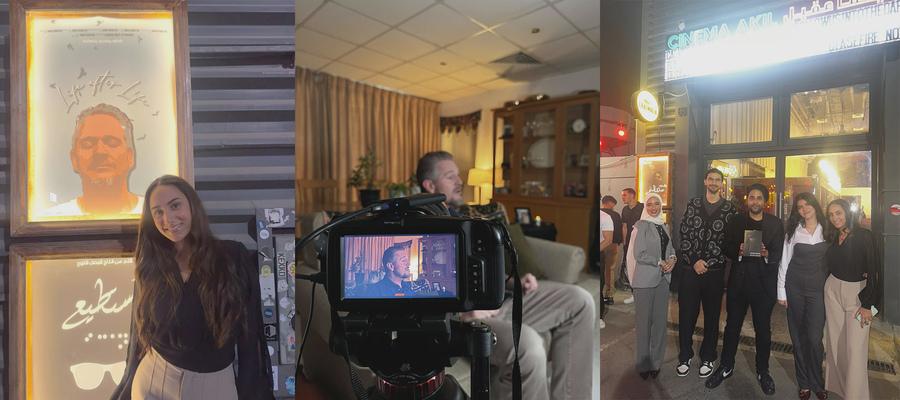
Life After Life: AUS student Jana Khalifa on her acclaimed documentary about life after loss
We interviewed AUS’ very own Jana Khalifa, a fourth-year multimedia design student whose deeply moving documentary film Life After Life has received several international film selections and nominations. The story focuses on the journey of Adrian Matt Zytkoskee (assistant professor of English at AUS) from grief and trauma, after the loss of his wife, to healing, transformation and rebirth. The documentary explores themes of growth, hope and the enduring strength of the human spirit, and has already touched the lives and hearts of thousands of audiences at international festivals around the world.
1. What inspired you to create this documentary, and how did the idea first come to you?
The brief for this project was simple: “Find a story that has impacted you.” So, I looked for such stories around me. Naturally, I started with my close circle of family and friends, but nothing quite resonated.
Then I remembered a story my professor had once shared in a writing course I had taken two years ago. During class, Dr. Matt Zytkoskee briefly, but openly, shared about losing his wife to cancer, and I witnessed first-hand the impact this had on him as an educator. He often had us write honest, reflective exercises, and I realized those “assignments” were shaped by his own lived experiences, his grief, his story. So, I thought: if I’m still thinking about this story two years later, then it must have had some sort of impact on me, and therefore, it must be a story worth telling.
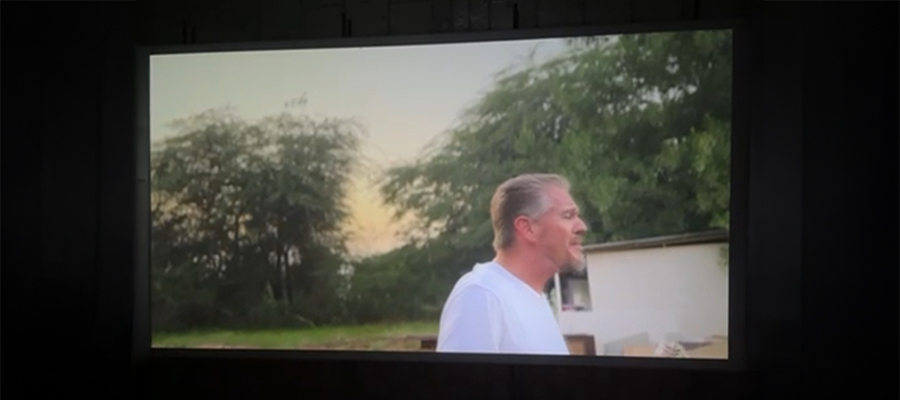
2. What is the story or narrative of Life After Life?
Life After Life is an intimate and heartfelt exploration of one man's journey through the depths of loss to the light of healing. A husband, father, educator and artist, he finds himself navigating the complexities of grief, transformation and self-discovery; but thanks to the transformative power of writing and music therapy, he is able to channel his pain into creative expression, and slowly find resilience and hope. This documentary offers an intimate look at growth, hope and the enduring strength of the human spirit.
3. The film explores grief, healing and creative expression. What core message or feeling were you hoping audiences would take away?
At my final review, a reviewer asked me: “So, is this film about grief?” And while grief is central to the story, I think the core message lies in what comes after: rebirth. Dr. Matt’s story has its share of “lows,” but somehow there’s always a “high” that follows, a sense of moving forward and creating meaning when it feels impossible. That’s what I hoped audiences would take away; not just the heaviness of loss, but the resilience, creativity and renewal that can grow from it. I wanted the audience to know that there’s always a life after life :)
4. Can you share some insights into your creative process—from research and filming to editing?
The “research” phase for a project like this is kind of interesting, because it is really all about getting to know your subject as deeply as possible. When I first approached Dr. Matt, I thought I already knew his story, but I quickly realized that I only knew a fraction of it. Even though he remembered me from the writing course, we still needed to build a connection and get to know each other before the story could really come to life. I spent hours interviewing him and learning how he wanted to be represented. And the truth is, that’s when I felt that maybe grief wasn’t the central theme here. Maybe it’s what comes after—The Rebirth.
With Dr. Matt being both a writer and a musician, I wanted his creative perspective to be present in the film, so I asked him to share some of his writings and music with me. I ended up incorporating his real writings into the documentary as chapter “entries,” which added an authentic, personal layer to the storytelling.
Once I felt I understood his story well enough, we began filming. It was a long process of filming interviews and B-roll footage with his family, whom I got to know closely during this process. They were truly such a warm family and made the process quite enjoyable.
After weeks of filming, I started editing. Funny enough, the brief originally asked for a 5-minute film, but Dr. Matt’s story was so rich and layered that it naturally grew into a 19-minute documentary. I worked with interview content, B-roll footage, archival footage and Dr. Matt’s own written pieces to weave together a narrative that was personal and authentic. I asked him to describe his journey in three words, and used those words—“Trauma, Healing, Spirit”—to structure the film, with each section introduced by one of his original writings.
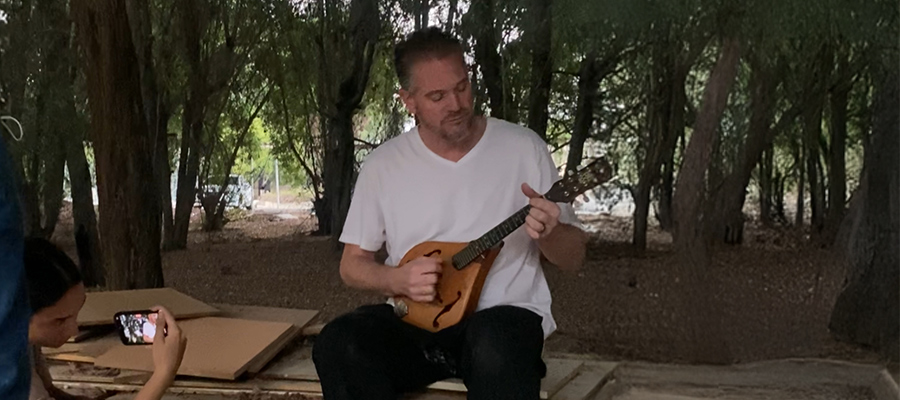
5. How did your studies in Film and New Media Design at AUS influence your approach to the project?
AUS has been the perfect space for growth and self-expression, and I’m especially grateful to Mohamed Mamdouh (Assistant Professor of Art and Design) for his guidance throughout this project. From the start, he pushed me to dig deeper and bring out the best in the film. I was actually hesitant to move ahead with this project at first, worrying that the subject might be too sensitive for Dr. Matt. Professor Mamdouh encouraged me to approach it with care and respect, giving me the confidence to move forward.
6. How has it felt to have your work showcased at international festivals such as the New York Istanbul Short Film Festival and the Athens International Monthly Art Film Festival?
I’m very honored to have my work shown at these festivals, and it has been quite rewarding. I’m especially grateful that the film, and Dr. Matt’s story, resonated with people in different parts of the world, and I just hope that it left an impact on others the way it did on me.
7. How has this experience shaped your perspective as a filmmaker, and what are you working on next?
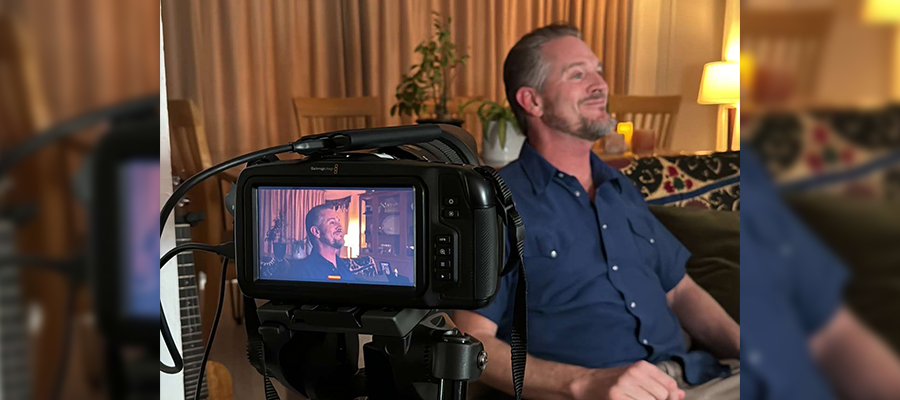
In my view, this film’s real achievement was the impact it had on Dr. Matt. One of my proudest moments was receiving his feedback and him saying, “Thank you, this was so honoring…I am nearly speechless.” I’m grateful I could tell his story thoughtfully and truthfully, and it means a lot to know that the film made a difference in someone’s life. Through this project, I came to see how important it is to anchor my work in purpose and ensure that everything I create carries meaning and impact.
Last but not least, I’d like to thank Professor Mohamed Mamdouh for his ongoing support, Faysal Fattouh for his help with cinematography, Zeina Khalaf for her support on production, and my sister Salma Khalifa, who stayed up late with me and patiently handled all my stressful moments.
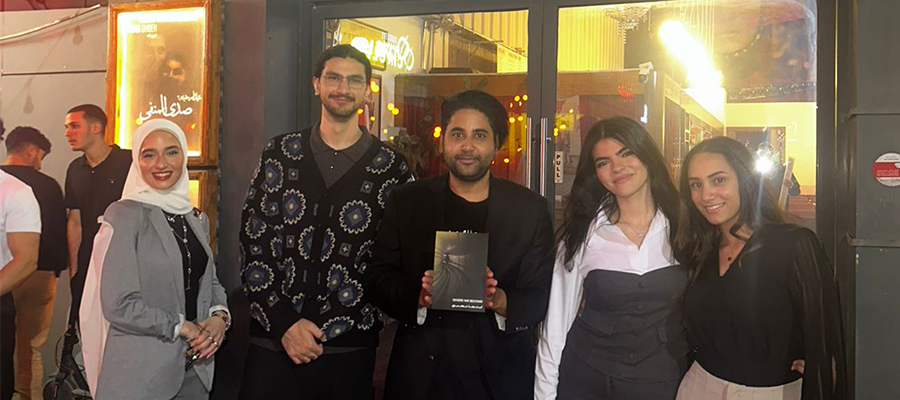
Caption: Students from American University of Sharjah pictured outside Cinema Akil, where their documentaries were recently screened to audiences in Dubai.
As of September 23, Life After Life has been selected for the New York Istanbul Short Film Festival, named a finalist at the Symbiotic Film Festival, nominated at the Kosovo Young Filmmakers Festival KYFF and received an honorable mention at the Athens International Monthly Art Film Festival (a distinction announced alongside the festival winners).
To watch the Life After Life trailer, please visit Vimeo.

